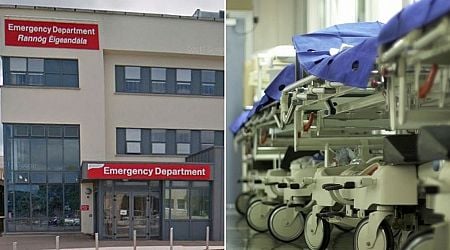Patients missed out on haemorrhoid ops due to Covid-19 pandemic, figures show
The number of people undergoing procedures for the treatment of haemorrhoids was slashed by more than one-third due to disruption caused by the coronavirus outbreak

New figures show that Covid-19 have revealed that the number of procedures for the treatment of haemorrhoids was slashed by more than one-third during the pandemic due to restrictions and cancellations.
A total of 28,908 people have had their haemorrhoids stapled, lasered, injected, ligated, or destroyed in public hospitals during the past five years, according to data from the Health Service Executive (HSE).
However, the number plunged from a high of 6,833 in 2019 to just 4,458 following the emergence of the Covid-19 pandemic in 2020 – a reduction of nearly 35 percent, leaving thousands waiting for treatment for the irritating ailment.
READ MORE: Ireland in tears listening to heartbreaking exchange between Galway Rose and Dáithí Ó Sé
READ MORE: Irish Olympic heroes have medals taken off them over 'chronic issue'
The number of procedures performed in 2021 recovered slightly to 5,262 in 2021, but this was still 23 percent below pre-pandemic levels. It increased to 5,873 in 2022, and, last year, 6,482 patients were treated.
Haemorrhoids, also known as piles, are lumps containing enlarged blood vessels located inside or around the rectum and anus. They can cause bleeding, pain, and itchiness.
The most popular procedure for the treatment of haemorrhoids in public hospitals during the past five years was ligation, according to records released by the HSE under freedom of information laws. This involves the placement of a rubber band around the swelling, which cuts off blood flow and causes it to fall off in around 10 days.
A total of 20,695 patients had haemorrhoids removed by way of ligation, while 7,023 had their piles injected with a sclerosing agent, which causes the swelling to shrink and shrivel up.
Nearly 2,000 people underwent a procedure called a haemorrhoidectomy, which involves the surgical removal of large haemorrhoids. Around 70 patients had their piles stapled, and fewer than 20 had them lasered.
A total of 155 patients underwent a less specific procedure recorded simply as “destruction of haemorrhoids”, according to the HSE records.
Perhaps surprisingly, the hospital that performed the most procedures for the treatment of haemorrhoids since 2019 was South Tipperary General Hospital, where 2,002 patients were treated during the five-year period.
This was followed by Roscommon University Hospital (1,871 procedures), Sligo University Hospital (1,599), Our Lady’s Hospital Navan (1,576), and Naas General Hospital (1,497).
The hospital that performed the lowest number of procedures for the treatment of haemorrhoids during the same period was Children’s Health Ireland (CHI) at Crumlin, where fewer than five patients were treated in 2020, and none in each of the other four years.
Sign up to the Irish Mirror's daily newsletter here and get breaking news and top stories direct to your inbox.


































